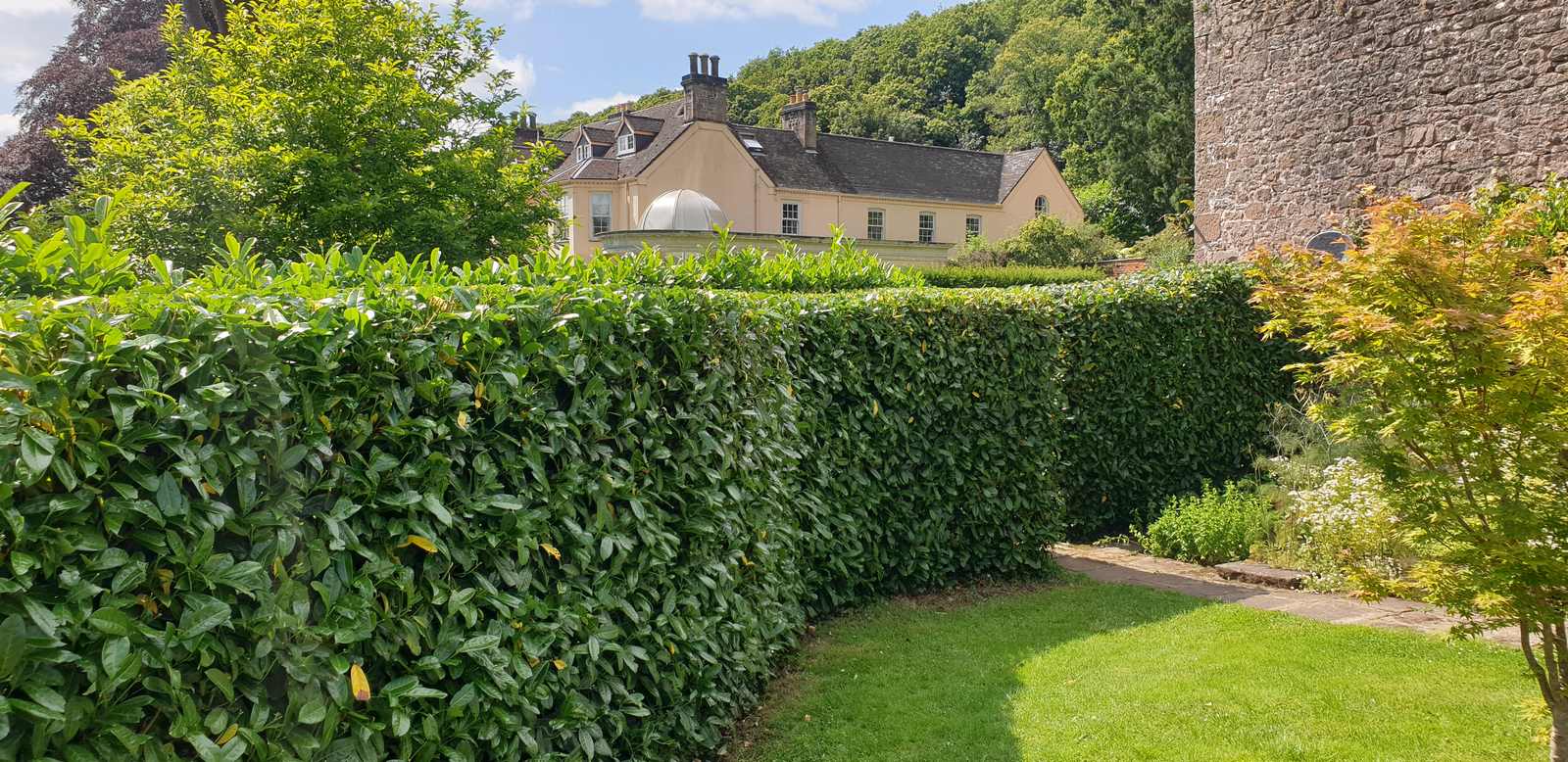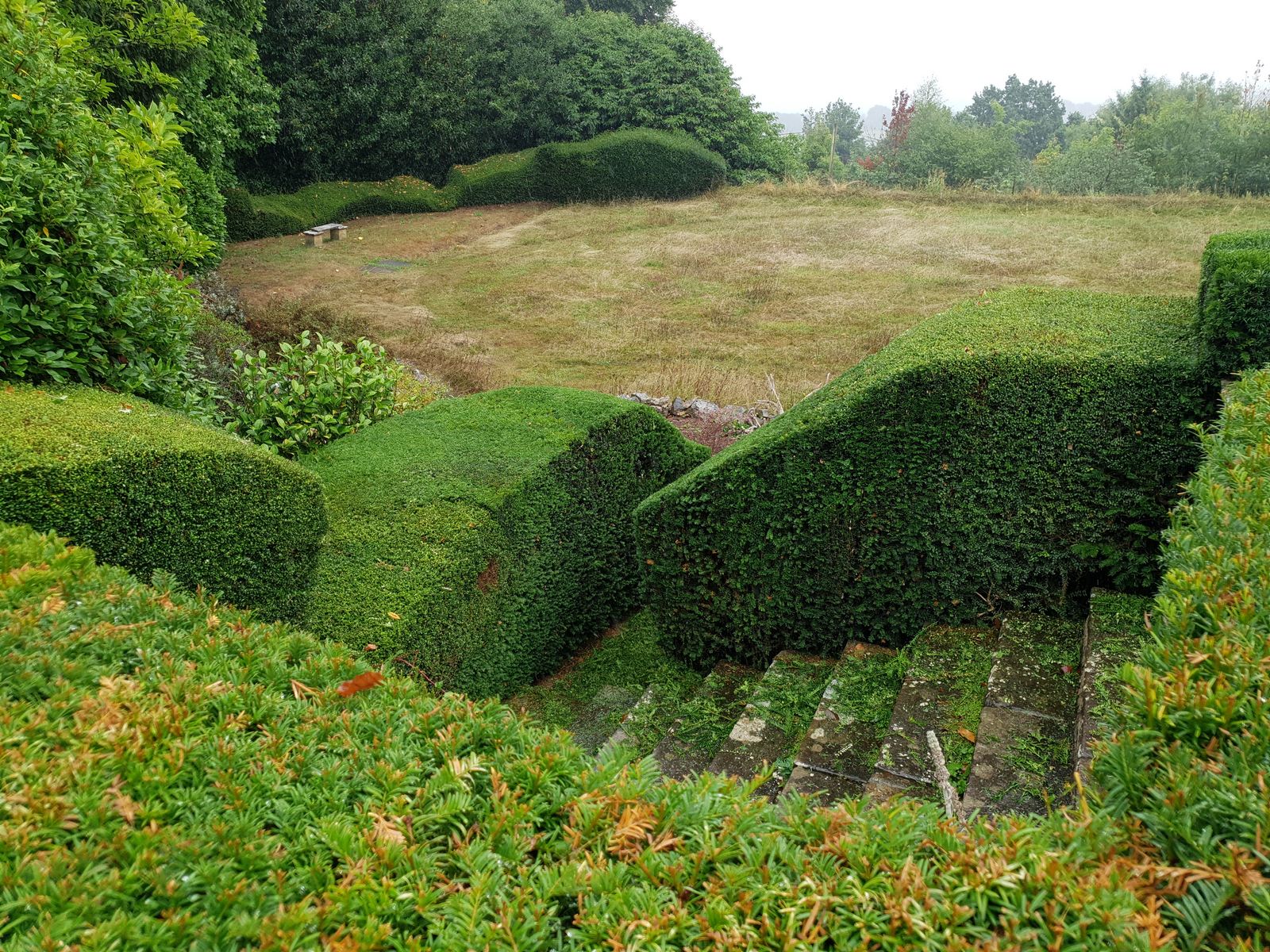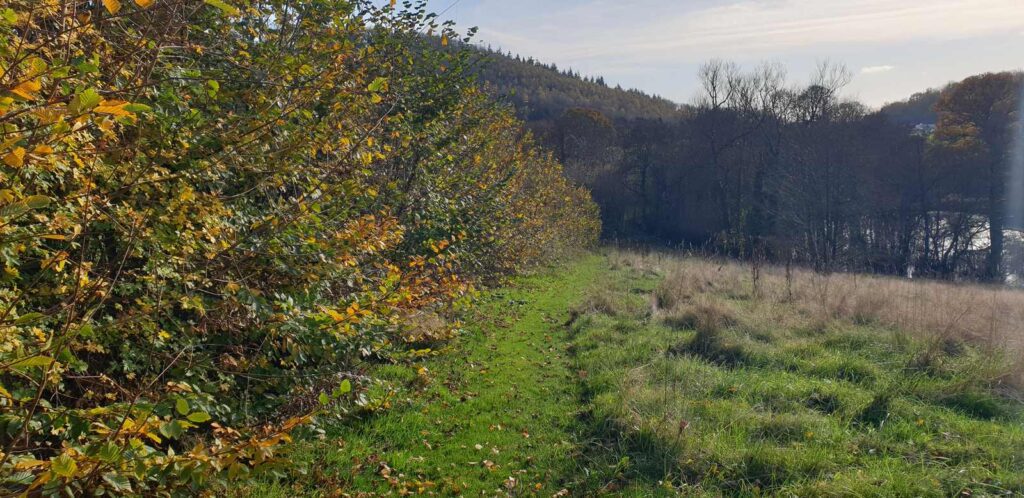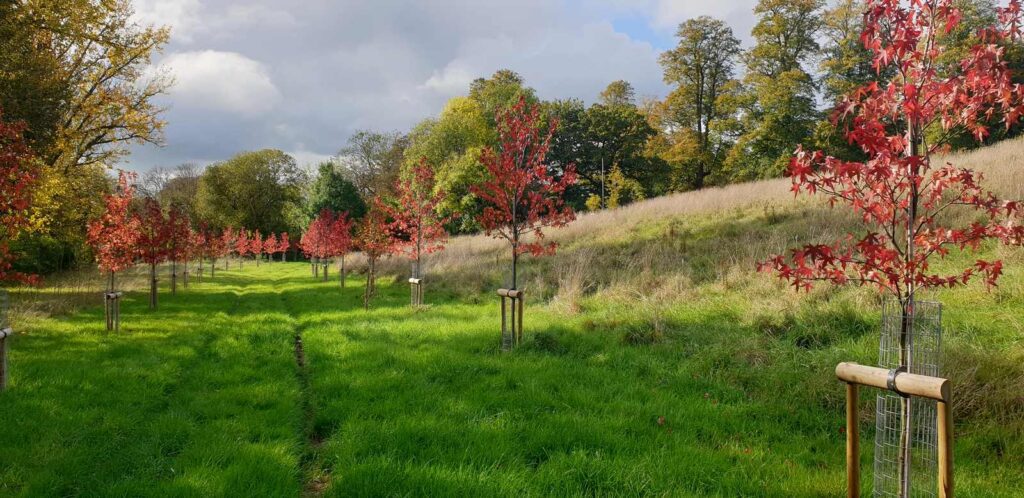Late summer and autumn sees the beginning of our annual hedgecutting schedule, part of our year-round garden maintenance work. The first hedges we trim in late summer include those that are an important feature of the designed landscape; the formal architecture of the garden design. We finish the hedgecutting schedule in late winter, in the wider landscape, managing native hedgerows principally for the biodiversity and wildlife value. Topiary work carries on whenever it is needed to maintain individual feature plants distinctive shape.
The shape and style of hedges should reflect the setting of the house, grounds and gardens.
Formal Hedges
Below are the Yew hedges, architectural in quality, creating a maze like enclosure around the Lily pond at Barrow Court in North Somerset. Photo from a number of years ago on a rare foray to the top of the church tower. Complex and detailed, part of a geometric layout on the formal parterre. Some Yew hedge restoration in progess around the Gazebos, Courts and Herms.


The Laurel hedges from Priors Mesne in The Forest of Dean form a strong boundary between the lawns, flower garden and kitchen garden.

A selection of hedgecutting projects routinely carried out by Gareth and his team.
Cloud Pruned Hedges & Topiary
The organic shapes of cloud pruned hedges can work well in combination with a more naturalistic setting. An old lawn tennis court managed for its native orchids and grasses.

Hedgecutting can be a challenging task, particularly access to the tops of tall, wide hedges. These Laurel hedges in Monmouthshire (Portuguese & Cherry) had a history of uniform cutting. As with every hedge they had slolwy crept out of shape and out of reach. We are cutting routes into the centre of these hedges and shaping them to provide both aesthetic and functional relief.

Renovating Yew Hedges
Unlike many evergreens, Yew, with its abundance of dormant buds sitting in wait within the old wood, responds well to cutting back beyond the existing canopy. The almost mythic propensity to regenerate itself, producing some of our oldest living specimens, thousands of years old.
In spite of the best intentions of routinely trimming your Yew hedge, each year they will incrementally add a little bit of width. Some middle age spread eventually becoming an issue that needs addressing. A 30-50 year cycle seems to be the average life span of growth and renovation for a well constrained Yew hedge. The further north you go, with the shorter growing season, the less quickly it outgrows its desired size.
Renovation involves cutting back all side branches, cleanly, right back to the main stem. No stubs! This should not be done in one go but in a staged manner, letting the plants produce sufficient new foliage, directly from the main stem, following each cut. The sequencing isn’t critical but can affect recovery vigour. The size and orientation of the hedge normally guides the best approach, for example cutting back a shady side first would result in a slow recovery owing to poor light levels.
- Year One – cut back sunnier side to main trunk (no stubs)
- Year Two – reduce top to c.15cm below final height
- Year Three – cut back final side to main trunk.
If recovery has been poor, delaying the second or third cut is an option.
The Yew hedge below had been cut back completely on the drive side and had showed really good recovery within a few years. Originally the plan was for a straight formal hedge but the client liked the organic shapes that were evolving. Isnt always as straightforward as this though – but thats a whole other story!
Native Hedgerows in the Landscape
Hedgerows are a defining feature of the lowland landscape of the British Isles, their cultural and natural history value inestimable.
Before picking up the edging shears and secateurs, for over a decade I worked as a freelance field botanist. One of my contracts in the late 90’s was as a field surveyor for the Countryside Survey 2000. The Countryside Survey is a study of the natural resources of the British countryside, monitoring changes over the longer term, the field data being collected roughly every decade since the late 1970’s. I remember the discussions around how to record hedgerows, as the extent of hedgerow loss over time had become a major conservation issue. The field surveyors found that neglected hedgerows were being recorded, no longer as hedgerows, but as a ‘line of trees’. The definition of a hedgerow has been firmed up since then I believe. This issue of hedgerow ‘neglect’ or management has returned now that I am more concerned about their management rather than the classification.
The pictures above, possibly more engaging than this ramble, show hedgelines as newly planted whips, recently laid with 3 years growth, ancient and overgrown, recently coppiced. Plus an ornamental line of trees for decoration.
ramble to be continued….















